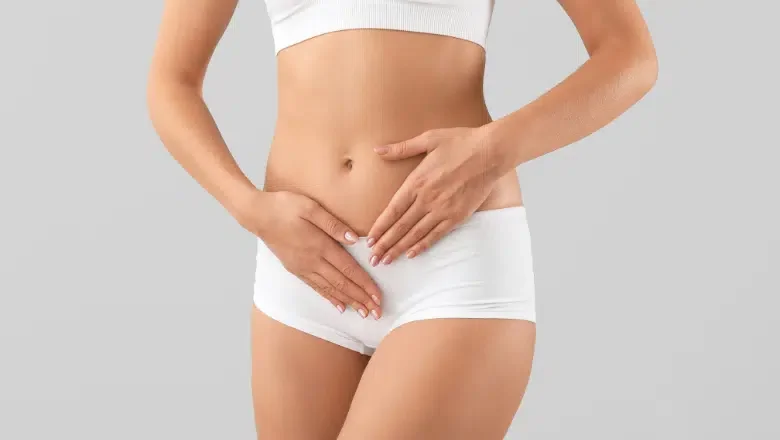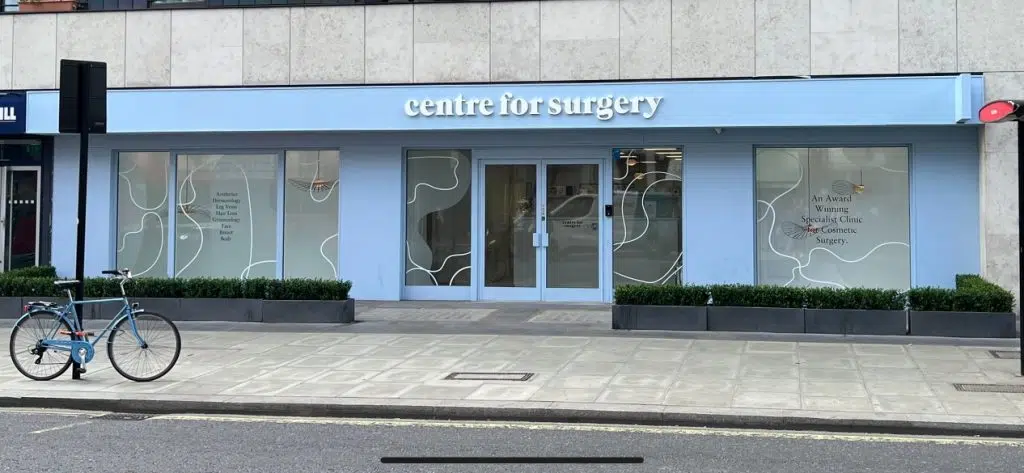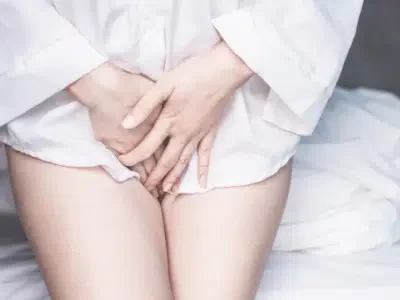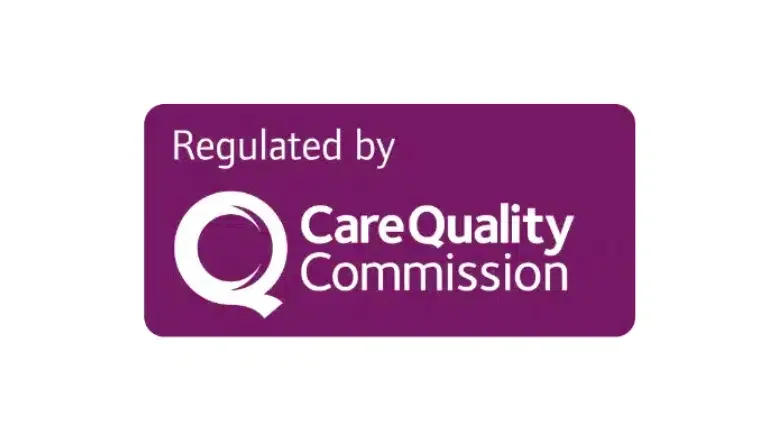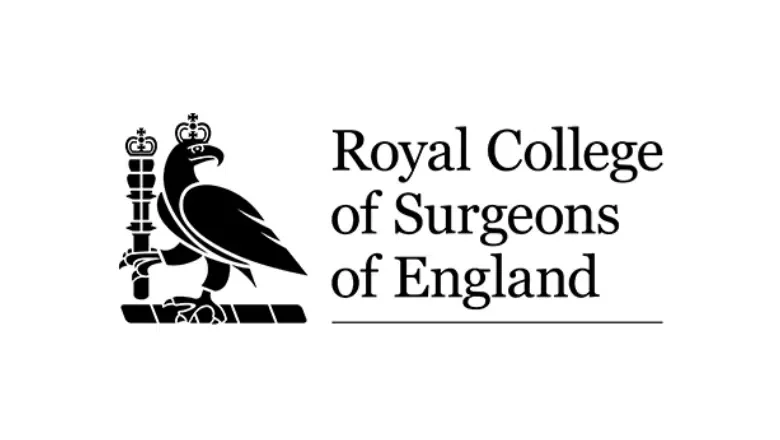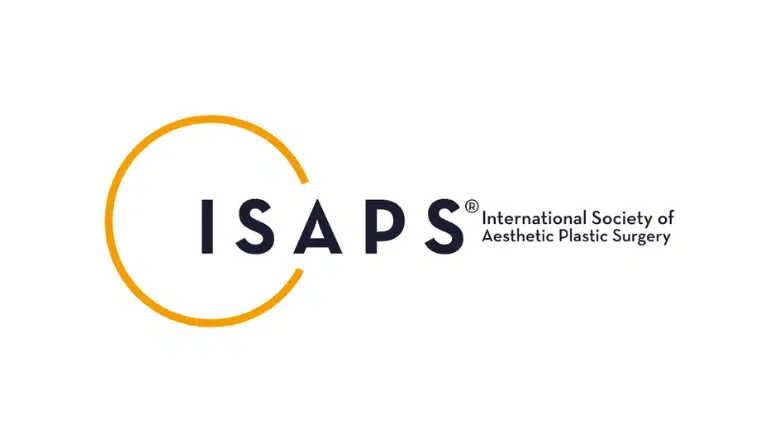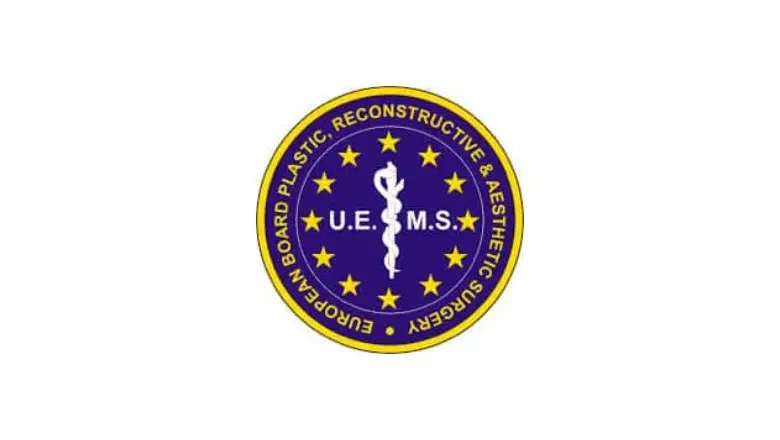Recovering from Labiaplasty: What You Should Know
Labiaplasty is a type of plastic surgery that changes the shape or size of the labia minora, which are the inner folds of the female genital area. Women often decide to have this surgery for both cosmetic and practical reasons.
Some women opt for labiaplasty to boost their self-confidence or to feel better about how they look. Others may want to wear certain types of clothing more comfortably or feel less restricted during physical activities like exercise. By cutting away extra tissue, the labia can have a neater, ‘tucked-in’ look while also sorting out any issues related to function or comfort.
RELATED: Labiaplasty FAQs – Q&A about Labia Reduction
The interest in enhancing or rejuvenating this intimate area has been growing recently. This is due to greater awareness about the procedure, as well as an increase in body positivity and empowerment. More and more women are considering this transformational surgery as an option. If you’re thinking about having a labiaplasty, the information below will give you some valuable insights into what to expect during the recovery period.
Centre for Surgery is considered the leading plastic surgery clinic in the UK for labiaplasty surgery. Our surgeons have years of experience in all types of labia surgery. Here, we present the key information to help make your recovery after labia surgery as smooth as possible to get the best labiaplasty results.
RELATED: What is labiaplasty surgery?
When Should You Consider Labiaplasty Surgery?
Labiaplasty isn’t just about improving how your labia look, although that’s often a key reason many people choose to have it done. The surgery can also help with a variety of other issues. So, when might this surgery be a good idea for you?
Appearance Concerns
If you’re unhappy with how your labia look, you might be considering this procedure. Maybe you feel that the inner or outer folds of your genital area (known as the labia minora and labia majora) have too much extra skin. This excess skin can sometimes hang down, making you feel self-conscious about your appearance, especially in form-fitting clothes or swimsuits.
Physical Discomfort
For some people, having larger labia can be uncomfortable or even painful. This can happen when the extra tissue gets in the way during daily activities or exercise. For example, you might find it uncomfortable when cycling, running or even just walking.
Sexual Discomfort
If you’re experiencing discomfort or pain during sex due to larger labia, labiaplasty can be a solution. Some people find that the extra tissue can cause issues with intimacy, affecting both their pleasure and their partner’s.
Clothing Issues
In some cases, having larger labia can be noticeable through tight-fitting clothing or swimsuits, which may make you feel uncomfortable or self-conscious.
Who Can Get Labiaplasty?
This surgery is generally recommended for adults who have a clear understanding of what the procedure involves and what it can and can’t achieve. It’s important to have realistic expectations about the results to ensure you’re satisfied with the outcome.
Benefits of labiaplasty surgery
Excessively large or asymmetrical labia minora can be a significant source of pain and discomfort during exercise or sexual intercourse. Women may also be unable to maintain a sufficient level of personal hygiene and may develop a significant loss of self-confidence.
RELATED: Labiaplasty and vaginal rejuvenation – what is a normal labia or vagina?
Labiaplasty surgery is the ideal solution to relieve physical pain and discomfort and improve the size and shape of the inner labia. Several factors, including childbirth, the natural ageing process, hormonal fluctuations and genetics, can influence how the labia appear. Labiaplasty is a highly effective plastic surgery procedure designed to reduce the size of the labia minora. The procedure involves the removal of excess labial tissue to reduce excessive protrusion. The inner labia should then appear in better proportion with both the vaginal opening and the outer labia majora.
There are several different techniques for performing labiaplasty surgery, including both the trim and wedge methods. After a thorough clinical assessment, the most suitable technique will be selected to address your needs and desires.
RELATED: How much does a labiaplasty cost?
How Does Labiaplasty Surgery Work?
Labiaplasty surgery is a straightforward procedure designed to reshape the labia by removing extra skin. While the surgery often focuses on the inner folds of the vulva, known as the labia minora, it can also be carried out on the outer folds, or labia majora, if needed.
The Surgical Process
To begin with, the surgeon makes small cuts to get rid of the extra tissue. If you’re also looking to make the outer folds a bit plumper, you have the option of getting fat transferred from another part of your body into the labia majora. This is done by injecting your own fat cells to give a fuller appearance.
What Happens Right After Surgery?
The good news is, the surgery usually doesn’t take long and is often done under local anaesthesia, meaning you won’t be put completely to sleep. In most cases, you can expect to go home just a few hours after the operation is completed.
Recovery and Aftercare
After the surgery, it’s common to have some swelling. This is a typical response and not something to be overly concerned about. You can use cold packs to help bring down the swelling, and your surgeon might also give you anti-inflammatory medication. Additionally, some people might experience minor itching or a bit of pain. But don’t worry—these symptoms usually go away within a week or so.
Labiaplasty Recovery – what to expect
Labiaplasty can be performed under local anaesthesia or general anaesthesia, depending on the extent of surgical correction required. When performed on its own, labia surgery takes between one and two hours to carry out. Patients will be able to go home later the same day once they have recovered from the anaesthetic effects. Labia surgery may be combined with vaginal tightening surgery in the same procedure, and this is also known as a designer vagina procedure.
Labiaplasty recovery timeline
The recovery timeline below after labiaplasty recovery should give you a good idea of what to expect in the days and weeks following labiaplasty surgery.
Immediately after labia surgery
Once the labiaplasty procedure is complete, you will spend time in our dedicated recovery suite. You should not feel any significant pain or discomfort as the local anaesthetic injected during surgery will still be working. Once the post-operative instructions have been explained to you, you can go home via car or taxi. If you had a general anaesthetic, you might still be drowsy from the effects of the anaesthetic. You will therefore need to have a responsible adult escort to drive you home and stay with you for at least the first 24 hours after labia surgery.
First 3 days after labiaplasty
Most women may experience mild discomfort, bruising, swelling and itching during the first few days after surgery. Although the initial period after surgery can be challenging, these symptoms will settle on their own by the end of week one. Over-the-counter painkillers can help to relieve any pain after labiaplasty. Labiaplasty swelling is common and is due to the well-developed blood supply to the labia tissue. Swelling is a normal response to labia surgery and is part of the natural healing process. Cold packs can be applied to the surgical area to help control bruising and swelling. After surgery, minor bleeding is relatively common and controlled by applying absorbent pads against the surgical site. You should contact your surgeon immediately if you experience significant bleeding or an unusual discharge. These may be features of a potential complication after labiaplasty.
The first week after labiaplasty
By the end of week one after labiaplasty surgery, most women will have noticed symptoms of pain and swelling to have improved. Painkillers should not be required after the first week. Bruising, swelling and itchiness will take longer to settle down as the incisions will not have healed fully yet. Significant itchiness that is getting worse may suggest a fungal or bacterial infection and should be assessed by your surgeon urgently. Excessive itching after labiaplasty may also be related to an allergic reaction to prescribed medication.
We would recommend taking one week off work after labiaplasty. You should take it easy during this period and keep the surgical site as clean and dry as possible to minimise the risk of wound complications.
2-4 weeks after labiaplasty
After two weeks, the majority of swelling and itchiness should have disappeared. Many women can now begin to see the results of labiaplasty surgery, although the incisions may not have fully healed yet. Our surgeons use dissolvable stitches to close the labiaplasty incisions, and they should be fully healed approximately four weeks after surgery.
Your surgeon may allow you to undertake certain forms of exercise four weeks after labiaplasty. Many forms of vigorous exercise should be avoided to prevent excessive strain on the incision lines. This includes activities such as cycling or riding a horse. Sexual intercourse should be avoided for a minimum of eight weeks after labiaplasty.
Six weeks after labiaplasty
Most patients complete the labiaplasty recovery period after six weeks. All activities can be undertaken apart from sexual intercourse, which should be deferred until eight weeks. Once eight weeks have been reached after labiaplasty surgery, labiaplasty scars should be sufficiently strong to withstand increased forces during both exercise and sexual intercourse. Labiaplasty scars can take between three and six months to fully mature. Although they may appear initially as a raised red line, they will gradually flatten to form a faint white line.
7 Key Tips for a Smooth Recovery After Labiaplasty Surgery
After undergoing labiaplasty surgery, it’s important to give your body the care it needs to recover fully and properly. Here are seven important tips to keep in mind:
1. Adhere to the Surgeon’s Guidelines
Follow the post-operative instructions your surgeon gives you to the letter. This may include recommendations for pain management, such as taking certain medications, as well as guidelines for activities to avoid. Using ice packs may also be suggested to help manage swelling.
2. Opt for Sanitary Pads Over Tampons
For the first few days post-surgery, it’s advisable to use sanitary pads to handle any discharge or minor bleeding. Tampons and sexual intercourse should be avoided until your surgeon confirms it’s safe to resume these activities.
3. Prioritise Hygiene
Keep the area where you had surgery clean and dry to minimise the risk of infection. Opt for showers rather than baths during this period and refrain from swimming or soaking in water until you’re fully healed.
4. Rest and Relax
The initial days after your surgery are critical for your body’s healing process. Avoid any form of heavy lifting or vigorous physical exercise. Limit your daily activities and give your body the rest it needs.
5. Be Sun-Smart
Protect the surgical area from direct exposure to sunlight for a few weeks after the surgery. If you absolutely need to be outside in the sun, cover the area with clothing or use a high-SPF sunscreen.
6. Maintain Open Communication with Your Surgeon
Don’t hesitate to reach out to your surgeon if you encounter any concerning symptoms like severe pain, heightened swelling, or anything out of the ordinary. It’s always better to consult your surgeon for a professional opinion.
7. Manage Your Expectations and Stay Positive
Recovery doesn’t happen overnight. Keep your expectations realistic and give your body the time it needs to heal. A positive outlook can significantly impact your overall recovery experience.
Top tips for the best healing after labiaplasty
Although labiaplasty is an invasive surgical procedure, it is less invasive than other types of vaginal plastic surgery, such as vaginal tightening surgery. The recovery period after labiaplasty can be made smoother by adhering to your surgeon’s post-operative instructions. Here we give advice on how to reduce pain, minimise swelling and alleviate itchiness after labia surgery.
How to relieve pain after labiaplasty
Pain after labiaplasty is minimal and will significantly improve over the first week after surgery. Pain after labiaplasty can be minimised by taking prescription painkillers as directed by your surgeon. Cold packs should be applied intermittently to the surgical area for the first 72 hours to minimise swelling and discomfort. You should take plenty of time out for rest and avoid vigorous activities, including going to the gym during the first week after labiaplasty surgery. Tight-fitting clothing should be avoided to minimise irritation of the labiaplasty incision lines. Loose-fitting cotton clothing should be worn. When sitting down, it is better to use a doughnut pillow to avoid excessive pressure being applied to the surgical site. Warm water should be used for wiping the genitalia instead of toilet paper when urinating.
RELATED: Is labiaplasty painful?
How to reduce swelling after labiaplasty
Swelling after labiaplasty is very common due to the highly developed blood supply to the delicate labial tissue. Labiaplasty swelling can last for several weeks after surgery. Swelling can be minimised by applying cold packs to the area for 15 minutes at a time. You should avoid excessive application of cold packs to avoid the risk of cold injury. Keeping well hydrated helps to speed up the healing process and reduce swelling after labiaplasty. You should try to drink at least eight glasses of water a day. Keeping mobile around the home helps to promote healthy blood circulation and minimise the risk of blood clots. You should, however, avoid long walks for at least four weeks after surgery. When sleeping, it will help to position a pillow beneath your buttocks. This helps to elevate the level of your genitalia and accelerate the resolution of swelling from the area quickly.
RELATED: How to reduce labiaplasty swelling
How to soothe itching after labiaplasty
Itching after labiaplasty is a common side effect experienced during recovery. As the labiaplasty incisions heal, itchiness is experienced as new tissue is formed to seal the wounds. Itchiness after labiaplasty begins to improve after one week. Labiaplasty itching can be controlled by keeping the surgical site clean and avoiding irritation of the incisions by rubbing them. Cold packs applied to the area can help to reduce any itching sensation after labiaplasty. Most forms of itchiness are related to the release of histamine. Antihistamine medication taken via mouth may be prescribed by your surgeon to minimise itching.
Things to avoid after labiaplasty surgery
We would recommend women take approximately one week off work after labiaplasty surgery. The labiaplasty recovery process will take longer and usually lasts between six and eight weeks. Fast and smooth healing after a labiaplasty can be achieved by avoiding vigorous physical activity and sexual intercourse for up to 8 weeks after labia surgery. If you are unsure when to start exercise, always ask your surgeon first. You should avoid smoking for at least four weeks after surgery, as smoking is associated with delayed wound healing. Alcohol should be avoided for the first two weeks to promote healthy wound healing. Showering is allowed 48 hours after surgery, although swimming and bathing should be avoided for six weeks to minimise the risk of infection. We recommend patients avoid scratching or rubbing the surgical incision as this could lead to wound breakdown and potential wound infection.
Topical creams to alleviate itchiness should be avoided for at least four weeks, as the incisions will still be actively healing. Tampons should be avoided as they could irritate the incisions, and women should use sanitary pads instead during the first four weeks after labiaplasty. Constipation after labiaplasty can be treated with laxatives such as lactulose. Keeping well hydrated and eating a high-fibre diet can also help to prevent constipation.
FAQs about Recovery After Labiaplasty
What is labiaplasty surgery?
Labiaplasty is a type of surgery that changes the shape or size of the labia minora. These are the smaller, inner “lips” near the opening of the vagina. The operation is often done for a variety of reasons, such as to relieve discomfort during activities like exercise or sex, or simply to address concerns about how the area looks.
When should I think about getting labiaplasty surgery?
Deciding when to have labiaplasty is a deeply personal choice and can be influenced by several factors:
- Physical Discomfort: If you find that you’re often in pain or experience irritation when you’re active or having sex, it might be a good idea to consider getting the surgery sooner.
- Age: Women of different ages opt for labiaplasty. There’s no “perfect” age for the procedure; it just needs to be the right time for you personally.
- Planning for Children: If you’re planning on having kids down the line, you might want to hold off on the procedure until after childbirth and any needed recovery time.
- Medical Conditions: If you have health issues that could make healing more difficult or increase risks during surgery, your doctor might suggest waiting until these are under control.
It’s crucial to have a straightforward chat with your plastic surgeon about why you’re thinking about labiaplasty, what you’re hoping to achieve, and any worries you might have. That way, you can make an informed decision about when to go ahead.
What are the risks and complications I should know about?
As with any type of surgery, labiaplasty comes with some risks like infection, swelling, and bleeding. Other possible issues could include lasting pain and itching. Another thing to be aware of is that the procedure could result in uneven labia. If you notice signs of an infection or if any other symptoms don’t go away, it’s crucial to see a doctor right away.
How long will it take me to recover from labiaplasty surgery?
The time it takes to get back to your normal routine after labiaplasty can differ from person to person. Generally, most folks are back at work and doing light activities within a week or two. You should steer clear of heavy exercise or physically demanding tasks for a few weeks, though. Pain and swelling usually go down after a few days, and if you have any stitches, they should dissolve by themselves within a couple of weeks. Your surgeon will give you detailed instructions on what to do after the surgery and will check how you’re doing in follow-up visits.
Is labiaplasty recovery painful?
Most women who have labiaplasty do not experience significant pain. Any mild pain can be easily controlled with over-the-counter painkillers such as paracetamol for up to 1 week after surgery.
How long do labiaplasty stitches take to dissolve?
Here at Centre for Surgery, our plastic surgeons and gynaecologists use the highest quality dissolvable stitches during most types of labiaplasty surgery. It takes between three and four weeks for dissolvable stitches to be absorbed by the body. The result is a barely visible scar that will improve further over the first three months after labia surgery.
Will I lose sensation after labiaplasty?
As with any plastic surgery involving incisions, it is normal to experience a temporary loss of sensation and numbness in the area of surgery after a labiaplasty. Once swelling disappears, labial sensitivity should return. Most women can look forward to increased sensation after labiaplasty due to the removal of excess labia tissue that may have been responsible for significant discomfort.
What will the scars look like after the surgery?
Like any surgery, you will have some small scars where the incisions were made. The good news is that the stitches used usually dissolve on their own and are designed to minimize scarring.
When can I have sex after labiaplasty?
Sexual intercourse should be avoided for eight weeks after labiaplasty surgery. Always listen to your body if you do not yet feel ready to engage in sexual activity.
RELATED: Does sex cause elongated labia?
Why Choose Centre for Surgery for Your Labiaplasty Procedure?
When it comes to making a transformative change in your life, you deserve the best. Centre for Surgery has earned a reputation for excellence in the field of plastic surgery, including vaginal rejuvenation. Here are compelling reasons to trust us with your labiaplasty procedure:
Expert Surgeons
Our surgeons are skilled, experienced, and at the forefront of surgical innovation. They have developed unique labiaplasty techniques that minimize pain and scarring, ensuring you a smoother recovery and outstanding results.
Personalised Care
We believe that each patient is unique, requiring a tailored approach. From your first consultation, you’ll be treated with compassion and respect as we work to understand your specific concerns and goals. Our surgeons will then create a customised plan just for you.
Cutting-Edge Facilities
Our state-of-the-art operating rooms are equipped with the latest technology, ensuring the highest standards of care and safety.
Patient Testimonials
Don’t just take our word for it! Here’s what our satisfied patients have to say:
“I couldn’t be happier with the results! The staff was friendly, and the surgeon made me feel so comfortable. It was a life-changing experience.”
“My confidence has soared after my procedure. The healing process was quicker than I had imagined, and the results were fantastic!”
Easy Consultation Booking
Ready to take the next step? Booking a consultation with us is simple. Just call us at 0207 993 4849 or email us at contact@centreforsurgery.com.
Learn More
Curious to know more before making a decision? Visit our plastic surgery blog for comprehensive information about labiaplasty and other procedures: Centre for Surgery Blog
Choosing Centre for Surgery means you are opting for quality, experience, and a compassionate team dedicated to helping you achieve the best version of yourself. Make the right choice—choose Centre for Surgery for your labiaplasty procedure.
